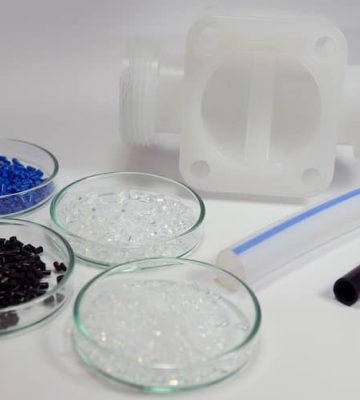They enrich our everyday lives in many essential places and are key enablers for the energy transition. They can be found in various technologies and applications, for example in the aviation industry, in cars, in heart surgery and in multifunctional clothing. We are talking about fluoroplastics, the all-rounders among high-performance plastics. For the fact that you hardly notice them, they are amazingly important for advancing a sustainable future. How exactly do they work?
Keyword energy transition: The EU has set itself the goal of being climate neutral by 2050. A crucial building block for achieving this ambitious plan is the promotion of renewable energies. The fact is: no wind turbine turns without fluoroplastics, no solar panel works without the high-performance plastic.

The unique properties of fluoropolymers, in particular their excellent resistance to aggressive chemicals or corrosion and their ability to withstand even the most extreme temperatures, make them so important for generating clean electricity from solar power. They increase both the lifetime and efficiency of photovoltaic systems.
Fluoropolymers are critical for protecting solar panels from all types of weathering. In addition, they improve electrical insulation and, if required, provide optical transparency, thus enabling translucent solar modules for visually appealing facades, conservatories or canopies for terraces. Such an intelligent combination of solar protection and power generation could soon ensure that entire house facades are used to generate energy.
Not only is solar energy booming, the installed capacity of wind energy is also increasing; a prerequisite for this is greater efficiency and performance. In wind turbines, fluoropolymers are making sure of this in very different places: from the control centers for offshore wind farms to the rotor blades made of composite materials.
Want some examples? Paints and coatings made from fluoropolymers are used on the rotor blade to protect the material against heavy rain or severe storms, thus extending the service life and reducing the maintenance requirements of the wind turbines. To ensure that everything meshes perfectly with the rotor shaft in the wind turbine, friction-reducing fluoropolymers help keep the plain bearing in the rotor running smoothly. In the production of turbine blades made of composite materials, especially for the offshore sector, release films made of fluoroplastics are used to ensure that the various materials can be easily joined together and, if necessary, separated again – which is also important for later recycling of the turbines.

The EU’s sustainability goals require a shift away from fossil fuels such as coal, oil and natural gas. In order to still have sufficient energy available for industry, the economy and society, it is necessary to produce green hydrogen. Fluoroplastics are at the forefront of this, for example as central components of the electrolyzer for converting water into hydrogen. They are thus crucial to the defossilization of the German economy.
Fuel cells, in turn, convert hydrogen into electricity, which is crucial to making the EU’s energy mix more sustainable. As ion-exchange membranes and in other key components of the design, fluoropolymers ensure that fuel cells act as a buffer for highly fluctuating amounts of energy from wind energy or photovoltaics, which can then be delivered to industry and consumers.
Fluoroplastics are also needed for the powerhouse in the electric car, the battery. As an electrode compound, they help to increase the performance of a lithium-ion battery. In this way, it is becoming increasingly possible to store renewable energy, some of which is generated irregularly, and feed it into the grid at different times.
Possible alternatives to all these examples suffer from being less efficient and functional.
The examples show: Fluoropolymers are indispensable for the success of the European Green Deal.
But fluoropolymers are also important beyond green goals: They help with faster data transmission with 5G, the semiconductor industry needs them in chip production, and they are found in other central components of smartphones and computers as well as cars. They are also used in everyday products for the kitchen, as medical devices such as stents for heart surgery, and as part of the stadium shell of the Allianz Arena.
The daily routine of a young Hamburg resident provides some impressions:
Worldwide, there is a threat of tighter regulation of so-called eternal chemicals, i.e. substances that are not degradable in nature. The European Chemicals Agency (ECHA) is currently conducting a restriction procedure directed at the approximately 10,000 perfluorinated and polyfluorinated compounds (PFAS). If the plan is put into practice, the EU could for the first time ban an entire group of substances containing countless chemicals – including the 38 fluoroplastics that belong to this group of substances. The background to this is that ECHA wants to minimize the risk to human health and the environment that PFASs may pose. However, since fluoropolymers, unlike the other PFASs, are high-molecular substances, they do not accumulate in the human body or in nature.
And at the end of their service life, fluoropolymers are mainly recycled for energy or thermally separated from other materials (total: approx. 84 percent). This is shown by the results of the study “Fluoropolymer Waste in Europe 2020”. The total share of fluoropolymers in all waste streams was also less than 0.01 percent by weight. In comparison, plastics as a whole accounted for about 4.8 percent of the total amount of waste collected. Various collection systems at national and European level ensure that fluoropolymers are largely recycled at the end of their life cycle. Find out more on the website of the pro-K industry association.